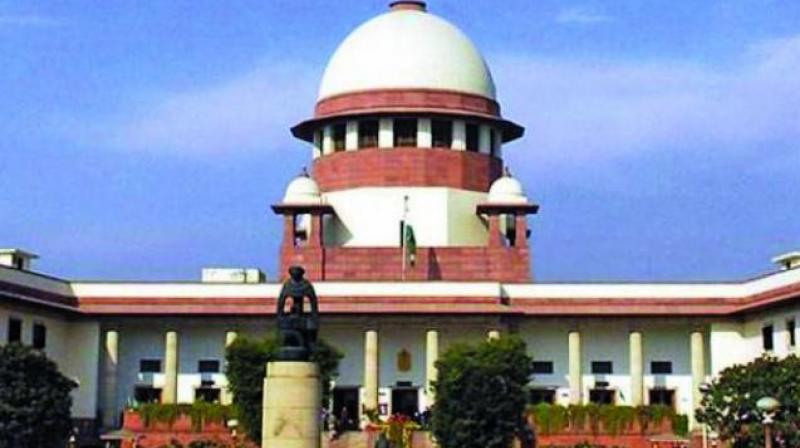Hyderabad: Ramlalla can be juristic person
Courts treated deities as minors requiring protection.

Hyderabad: The legal tangle over the Ayodhya-Ram Janmabhoomi issue in the Supreme Court has raised a crucial question: Can Ramlalla be a juristic person?
The top court in several cases has held that a deity has juristic entity and is capable of having rights and capable of being sued. The apex court in many cases has ruled in favour of deities of different religions of the country.
The five-member bench headed by Chief Justice Ranjan Gogoi raised this question when senior counsel K. Parasaran, appearing for Ramlalla Virajman, the deity in Ayodhya, insisted that the disputed site was the birthplace of Lord Ram and that the issue was a matter of faith for Ram devotees.
Justice Bhushan, one of the members on the bench, said that idols may be juristic persons, but can a place be a juristic person? He questioned how plaintiff No 2, which is the Janmasthan, can be a judicial person.
Justice S.A. Bobde asked the senior counsel: “Has a question of this nature ever arisen in any other court?” and “Has any court dealt with, say, the issue of birth of Lord Jesus Christ?”
The bench pointed to the judgment of the Uttarakhand High Court which had recognised the rivers Ganga and Yamuna as “living entities”.
Mr Sarasani Satyam Reddy, senior counsel of the Supreme Court, said that as far as the matter of deities being legal entities is concerned, High Courts and the Supreme Court have delivered several judgments since 1950, but so far no matter regarding the birth place of a deity has come up before a court of law.
He reminded the court that the Uttarakhand High Court order on rivers being legal entities was stayed by the apex court in 2017.
Mr Reddy said courts have to respect the religious beliefs of the people of this country in view of the fact that no one is able to produce a birth certificate of Lord Rama.
In several judgments with regard to rights of a deity, courts across the country have stood for the protection of the rights of the deities, he said.
It may be worth mentioning here that in Shiromani Gurudwara Prabandhak Committee, Amritsar versus Shri Somnath Dass and others, the Supreme Court in 2000 held that "thus, it is well settled and confirmed by the authorities on jurisprudence, and courts of various countries, that for a bigger thrust of socio-political-scientific development, evolution of a fictional personality to be a juristic person became inevitable.”
The Supreme Court observed that "This may be any entity, living, inanimate, objects or things. It may be a religious institution or any such useful unit which may impel the courts to recognise it. This recognition is for subserving the needs and faith of the society. A juristic person, like any other natural person, is in law also conferred with rights and obligations and is dealt with in accordance with law."
The court explained that “In other words, the entity acts like a natural person but only through a designated person, whose acts are processed within the ambit of law. When an idol was recognised as a juristic person, it was known it could not act by itself. As in the case of minor, a guardian is appointed, so in the case of idol, a Shebait or manager is appointed to act on its behalf. In that sense, relation between an idol and Shebait is akin to that of a minor and a guardian.”

